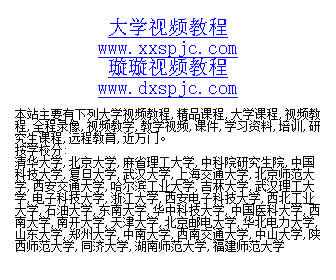![《诗歌入门》(Poetry)[PDF]](http://pic.dxspjc.com/dx_pic/9110413/2934700.jpg)
《诗歌入门》共分6个章节,分别论述了英语诗歌的要素、视觉形态、声音效果、音韵、比较和联想以及用词,深入浅出地对英语诗歌进行了全面、系统的介绍。《诗歌入门》语言简洁流畅,对英语文学专业的学生以及英语诗歌爱好者有很好的指导作用。“外教社原版文学入门丛书”以介绍文学理论和小说类型及相应的社会文化背景为主,勾勒出英美文学发展的概貌。本丛书文字简练、语言生动,对我国的外国文学及理论研究者、在校学生以及广大文学爱好者都有很高的参考价值。
目录:
Acknowledgements
Introduction
1 The key words of poetry
1.1 What is poetry.
1.2 The key words of English poetic history
2 The shape of poetry
2.1 The aesthetics of print
2.2 Pictograms and concrete poems
2.3 Visible but unreadable
2.4 Layout and punctuation
2.5 The poetic stanza and stanzaic form
3 The sound of poetry
3.1 Poetic sound effects: an overview
3.2 Onomatopoeia
3.3 Sound,patterning
3.4 Rhyme
3.5 The 'orthodox' rhyme
3.6 Some 'unorthodox' rhymes
3.7 Some indeterminacies of rhyme
3.8 Rhyme and meaning
4 Metre and rhythm
4.1 Complexities in the study of metre
4.2 The key metrical units
4.3 Metrical regularity and variance
4.4 Missing' and 'extra' syllables
4.5 Feet
4.6 Iambic metre
4.7 Trochaic metre
4.8 Dactylic metre
4.9 Anapaestic metre
4.10 Occasional feet
4.11 Metrical verse lines
4.12 Free verse
5 Comparisonsandassociations
5.1 Literal v. figurative
5.2 Metaphor and simile
5.3 Metonymy and synecdoche
5.4 Tenor, vehicle and ground
5.5 Conceits and extended similes
5.6 Dead and dying metaphors
5.7 Riddle poems
6 The words of poetry
6.1 Linguistic diversity
6.2 Poetic diction
6.3 Poetry of the everyday language
6.4 Creating your own language
6.5 Diction and argots
6.6 Poems about language
6.7 The Queen's (and other people's) English
A glossary of poetical terms Index

